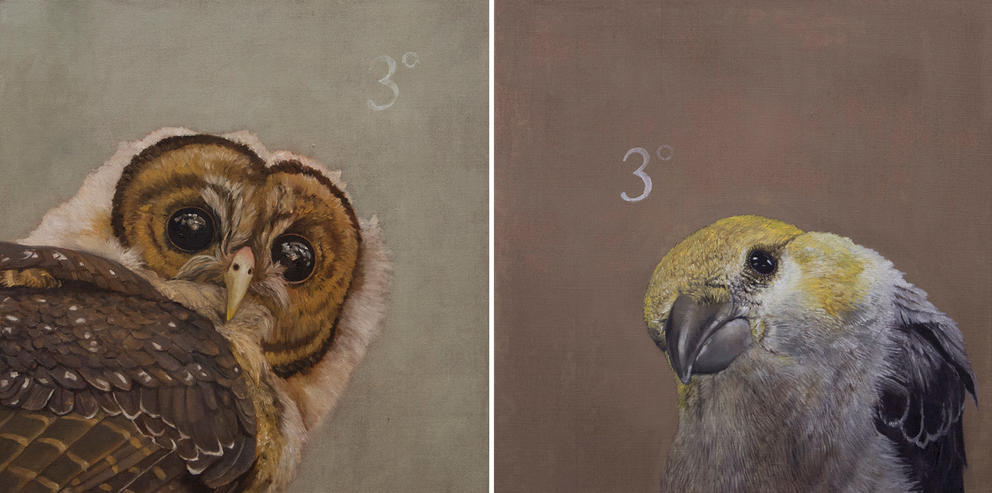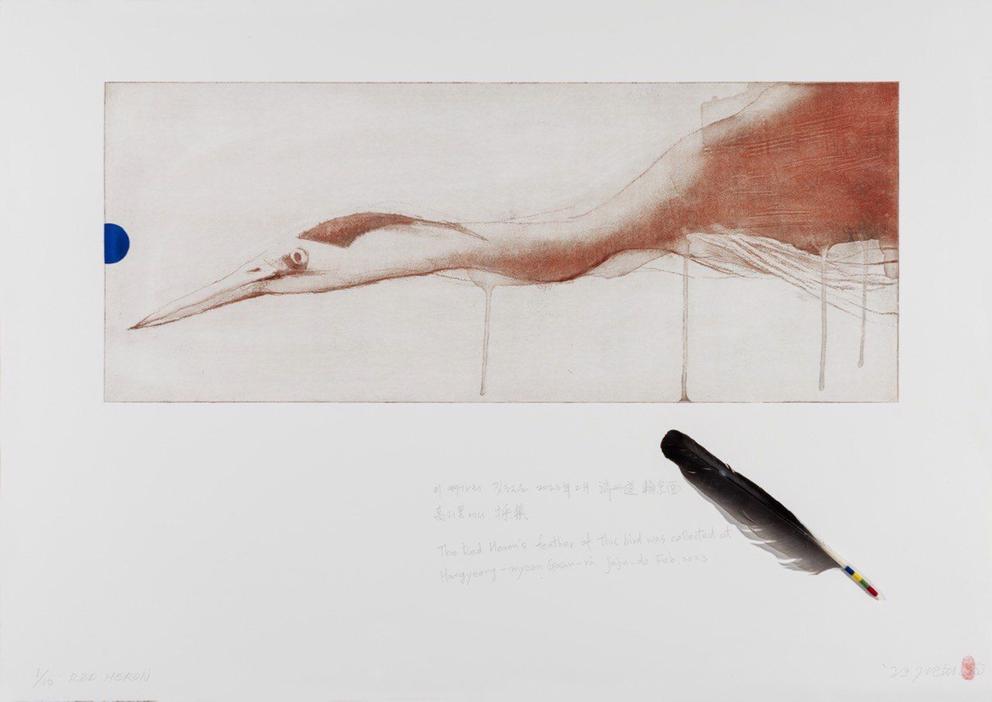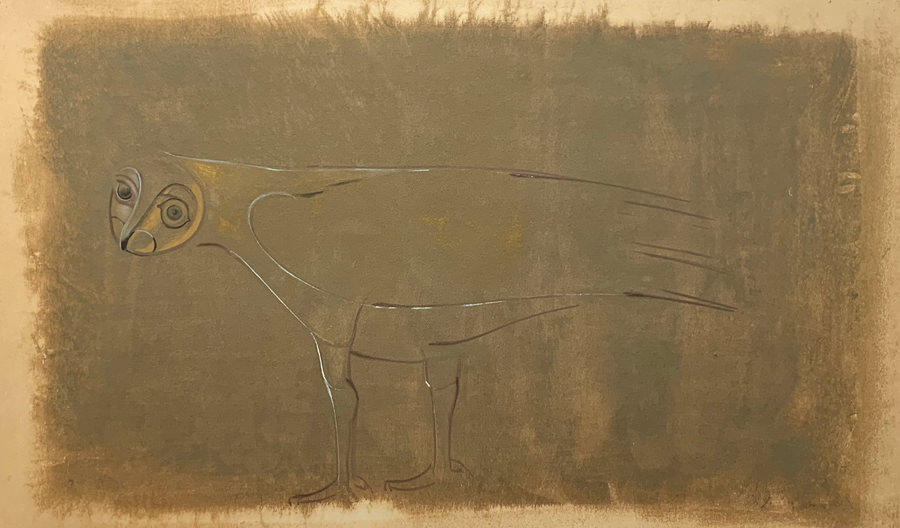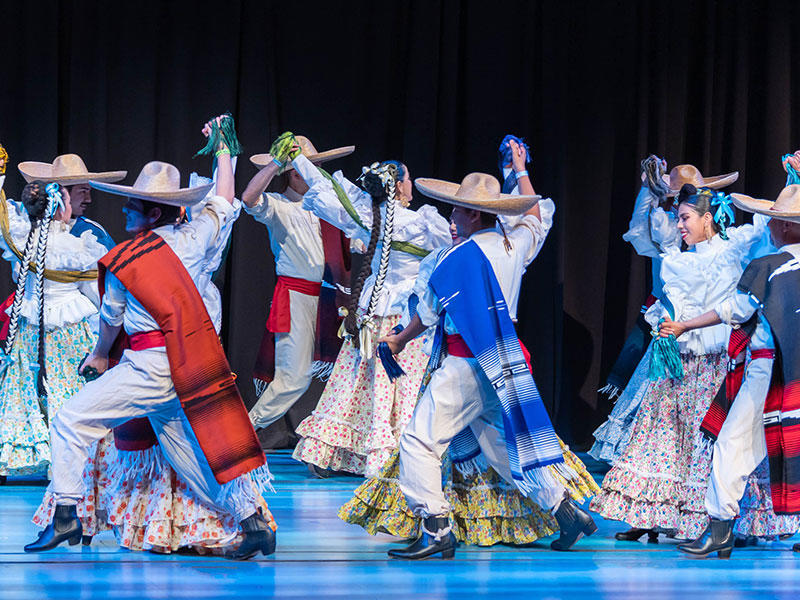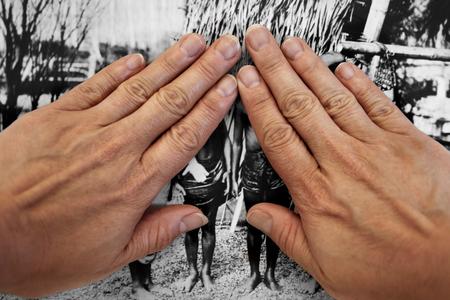The birds hang around doing a lot of impressive flocking and noisy honking until spring. While a nearby gas station attendant seemed very much over the snow geese (and the birders they draw), I couldn’t help but be amazed by the waves of sound and wings moving across the green landscape.
At that point I already had birds on the brain, having stopped by the new show at the Museum of Northwest Art in La Conner, Surge: Mapping Transition, Displacement, and Agency in Times of Climate Change (through January 21, 2024).
If the subtitle sounds a bit academic, there’s a reason — this recurring collaboration with the Skagit Climate Science Consortium pairs regional artists with environmental scientists to create work that illustrates urgent climate issues.
The show contains many powerful pieces, which I’ll come back to in a future newsletter, but in this issue I’m focused on a particular room devoted to a chirping collection of birds.
Called 66 Birds / 3 Degrees, the piece by Natalie Niblack showcases her naturalistic oil paintings of Western Washington birds that scientists consider “at risk” due to temperature warming and/or increased forest fires.
Accompanying every painting is a motion-activated sensor that plays the bird’s unique call, creating an avian cacophony when multiple people are in the room. It sounds like an aviary — with an undertone of warning.
“This project is designed so that the viewer is confronted by the direct gaze of each bird while listening to their songs,” Niblack writes in her artist statement. She hopes the “morning chorus” of bird recordings are a reminder of what we stand to lose with the extinction of species, and the silence that could surround us.
You can find another chorus of birds at Gallery 4Culture in Pioneer Square, where Seattle artist Eunson Choi has created a grove of square wooden cuckoo clocks.
A pandemic-inspired piece, Cuckoo/Puckuck (through Oct. 26) radiates with tension, embodied by the sudden popping-out of painted ceramic birds who call with human voices. With no clock elements, the mechanical boxes signal a danger that could happen at any time.
Choi says the work is rooted in both anxiety and nostalgia, as cuckoo clocks were a fad in late 1990s Korea. In this cultural moment, she also considers them a sign of resilience.
Nearby: Another flock of birds with Korean connections. ArtX Contemporary (formerly ArtXchange Gallery) is showcasing the work of Korean artist Gilchun Koh, who creates soft etchings of birds whose eyes are often bound in cloth.
Blind Birds, Winged Dreams (through Nov. 25) showcases Koh’s work, which speaks to Korean political history and the man-made environmental crises currently happening in his home of Jeju Island. Sharing the exhibit space is Olympia-based artist Chris Maynard, who carves legally obtained feathers with astonishingly intricate designs.
Regular readers know I can’t resist tracing an art theme, so we’ll continue as the crow flies with bird shows all over.
Up north in Edison, Andrew Vallee presents Trans-Pacific (at Smith & Vallee Gallery through Oct. 29), which includes images of birds found in Hawaii and the Northwest (including a gorgeous bronze barn swallow). And down south in Tacoma, the Washington State History Museum is featuring Avis Marvelous: Ornithology on the Western Frontier 1776 - 1896 (through March 3, 2024).
In Seattle, long-standing downtown gallery Woodside Braseth recently opened a new show highlighting regional art superstars Mark Tobey, Kenneth Callahan, Guy Anderson and Morris Graves. The Northwest Mystics (through Nov. 2) includes many of Graves’ moody mid-century bird sketches, including “Spirit Bird” and “Bird Gliding on a Golden Sea.”
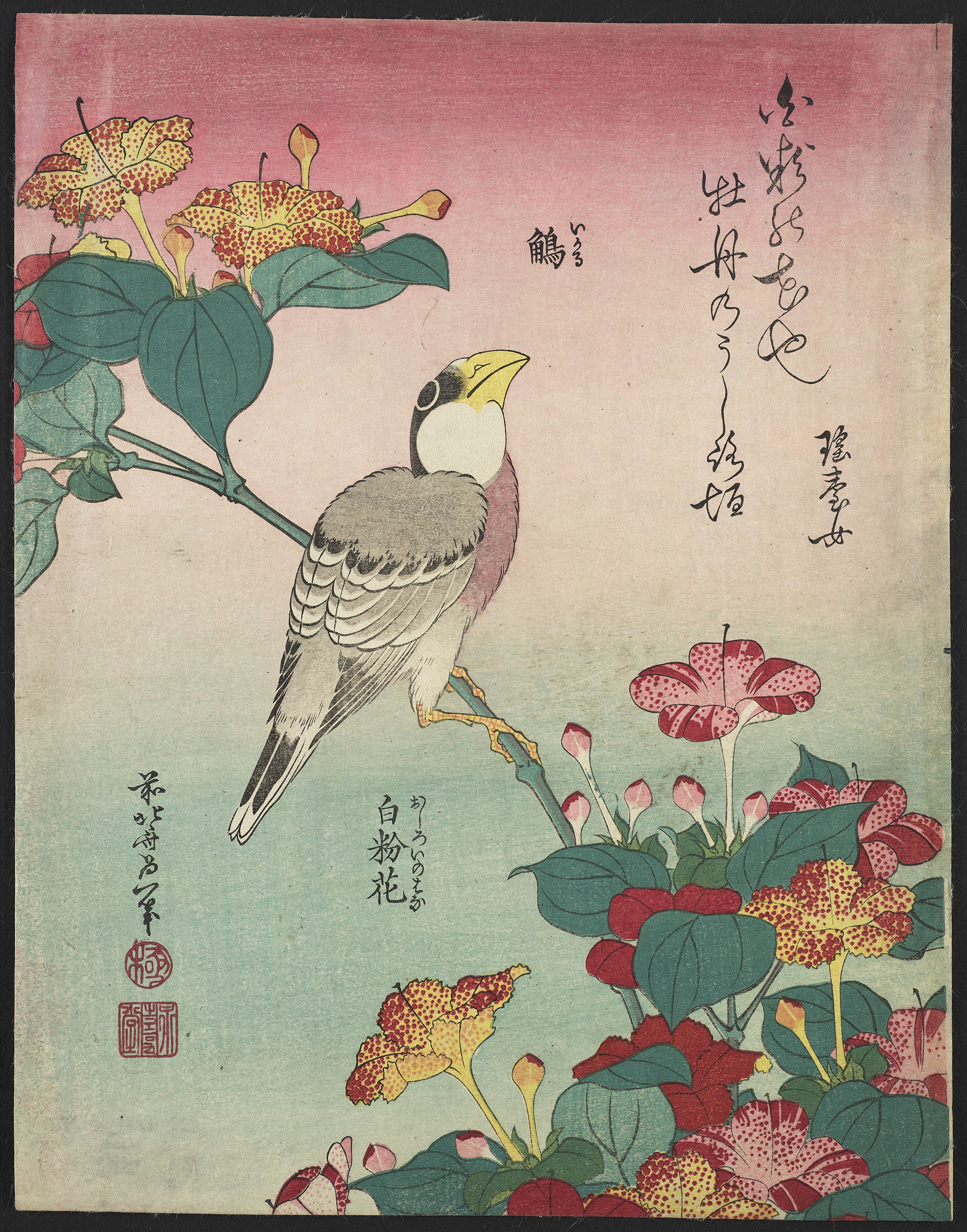
Seattle Art Museum’s expansive new show Hokusai: Inspiration and Influence from the Collection of the Museum of Fine Arts Boston (through January 2024) isn’t just about Katsushika Hokusai’s world-renowned wave and his 36 views of Mount Fuji. Peek into the intricate prints and you’ll find all kinds of richly drawn birds perched within — I spied a wagtail, a java sparrow, a kingfisher and a bullfinch for starters. (More on this massive exhibit soon.)
And yes, Jane Rosen’s show is called A Dog’s Life (at Traver Gallery through Dec. 2), but she includes quite a few blown-glass birds, including majestic ravens, peregrines and merlins.
But what if you have ornithophobia? There are plenty of non-bird-related arts happenings, I promise. And music fans in particular have some tough choices this weekend:
The always-innovative Emerald City Music kicks off its eighth season with the Evolution of Improvisation (Oct. 20-21), a century-spanning tour of musical improv from the baroque era to modern jazz. Note: I attended a previous “Evolution” installment and found it incredibly educational as well as a sonic treat.
Seattle Modern Orchestra is performing Sonidos: Music of the Americas (at the Chapel Performance Space, Oct. 20), featuring chamber music by composers with roots in Mexico, Puerto Rico and Argentina and curated by Cristina Valdés, director of the UW Modern Music Ensemble.
Modular Seattle presents an array of electronic and experimental sounds amid the huge defunct machinery at the Georgetown Steamplant. Sound of the Machine (Oct. 21) features 17 musical artists across stages in the Turbine Room, Boiler Room and Ash Room. (Definite Halloween vibes.)
And local performance group Bailadores de Bronce is celebrating 50 years of traditional Mexican dancing with two performances (at the Moore Theatre, Oct. 25, 11 a.m. and 7:30 p.m.). Featuring dances from Zacatecas, Jalisco, Veracruz, the Yucatán Peninsula and beyond, the group creates a colorful spectacle while keeping this cultural history in the present.
Finally: A quick plug for the latest installment in Crosscut’s Fall Arts video series. In this edition I talk with local photographer — and now filmmaker — Rafael Soldi, whose new show Soft Boy (Frye Art Museum, through Jan. 7, 2024) is rooted in his memories of growing up queer at an all-boys Catholic school in Peru. Read more and watch the video.
Get the latest in local arts and culture
This weekly newsletter brings arts news and cultural events straight to your inbox.

